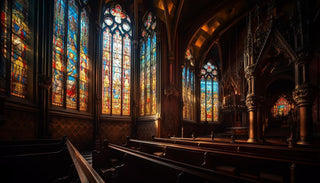Antoni Gaudí, a figure intertwined with spirituality and architectural genius, has long been revered beyond the bounds of conventional admiration. His magnum opus, La Sagrada Familia, stands as a testament not only to his innovative vision but also to a life devoted to faith and artistic devotion. In Barcelona, where his masterpieces dot the landscape, Gaudí is not merely remembered as an architect but as a figure whose life and work evoke the aura of sanctity. This narrative explores the possibility, rooted in a blend of fact and imagination, of Gaudí being considered a living saint or on the path to sainthood, reflecting on how this perspective illuminates the enduring legacy of La Sagrada Familia.
In the heart of Barcelona, La Sagrada Familia rises as a beacon of spiritual and artistic ambition. Gaudí, born in 1852, infused his work with a profound sense of divine inspiration. From the outset, his approach to architecture was not just about constructing buildings but about bridging the earthly with the heavenly. His dedication to La Sagrada Familia, a project he knew would surpass his own lifetime, was emblematic of his commitment to faith. Gaudí often said, "My client is not in a hurry," referring to God, underscoring the spiritual underpinnings of his architectural endeavors.
The idea of Gaudí being considered a saint is not mere fantasy. In the years following his death, there has been a growing movement among admirers and scholars alike, who see in Gaudí not just an architect but a man whose life was a testament to Christian virtues. His beatification process, initiated in 2003, is a testament to the belief that Gaudí's life and work were imbued with a sanctity that transcended the ordinary. This narrative does not seek to assert the certainty of his sainthood but rather to explore the implications of such a perspective on understanding La Sagrada Familia and Gaudí's broader legacy.
La Sagrada Familia itself is a narrative in stone and light, a physical manifestation of Gaudí's spiritual quest. The intricate facades and soaring towers are not merely architectural feats but are imbued with symbolism and meaning, reflecting Gaudí's intention to encapsulate the Christian story in the language of architecture. Each element, from the Nativity Facade to the Passion Facade, tells a part of this story, inviting onlookers to reflect on the profound themes of faith, sacrifice, and redemption. In this context, considering Gaudí as a saintly figure adds a layer of depth to the experience of La Sagrada Familia, transforming it from an architectural landmark into a pilgrimage site, where architecture and spirituality converge.
Gaudí's approach to his work, marked by meticulous attention to detail and an unwavering commitment to his vision, can be seen as an extension of his spiritual life. His practices, such as frequent prayer, attendance at Mass, and a lifestyle characterized by simplicity and asceticism, were not separate from his architectural endeavors but were interwoven with them. This holistic approach to life and work further cements the argument for his sainthood, positioning him as a figure who lived by the principles he sought to express through his art.
The ongoing construction of La Sagrada Familia, continuing long after Gaudí's death in 1926, is a testament to the enduring nature of his vision. The project, sustained by donations and the dedication of successive architects and craftsmen, has become a collective endeavor that spans generations. This continuity reflects not only the technical and artistic challenges of completing Gaudí's design but also the communal aspect of his spiritual vision. La Sagrada Familia, in its unfinished state, stands as a symbol of an ongoing quest, a work perpetually in progress, much like the spiritual journey it seeks to embody.
In considering the legacy of Gaudí and the enduring significance of La Sagrada Familia, the perspective of Gaudí as a saintly figure adds a profound dimension to the appreciation of his work. It invites a reflection on the intersection of art, spirituality, and the human quest for meaning. Whether or not Gaudí will be officially recognized as a saint, the sanctity perceived in his life and work enriches the experience of La Sagrada Familia, offering a glimpse into the soul of a man whose architectural legacy is inseparable from his spiritual journey.
In the end, La Sagrada Familia stands not just as a monument to Gaudí's genius but as a beacon of hope and faith. It is a place where the lines between art and spirituality blur, where the legacy of a man who might be considered a saint in the eyes of many continues to inspire and challenge. As the spires of La Sagrada Familia reach towards the heavens, they remind us of the transcendent potential of human creativity when it is dedicated to the highest ideals of beauty, faith, and community


